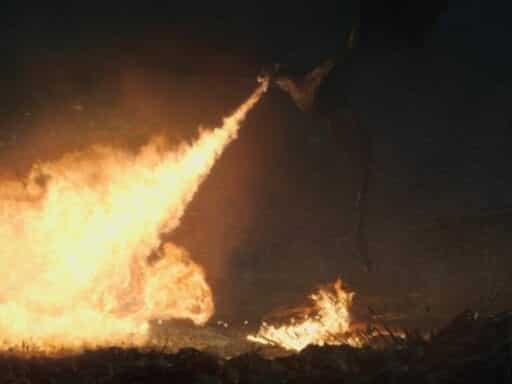Stick ’em with the pointy end.
At the climax of Game of Thrones season eight, episode three, “The Long Night,” the Night King finally met his match — though only partly, as many viewers had speculated, at the hands of Bran Stark and a carefully laid magic trap.
Instead — spoilers ahead! — the show’s resident teenage girl assassin did her thing, and Arya Stark wound up saying “no” to the god of death in spectacular fashion.
If you found it difficult to follow what was happening throughout the long, action-packed, scene-jumping, and very literally dark Battle of Winterfell, here’s what went down: In the middle of the fight, Arya briefly confronted Melisandre, the Red Witch. It was a hostile encounter; after all, Melisandre was on Arya’s kill list at one point for being mean to her best friend (and eventual love interest), Gendry.
But during this meeting, as Melisandre recounted their previous one years earlier, she pointedly reminded Arya that she’d prophesied that Arya would take many lives, including those of beings with blue eyes. In other words, she seemed to be pointedly suggesting to Arya that Arya use her assassination skills to go after the Night King.
Arya was clearly paying attention, because in the episode’s climactic moment, just as the Night King was about to kill a thoroughly indifferent-seeming Bran Stark, Arya pounced on him out of nowhere and stabbed him with her trusty Valyrian steel dagger. It was the very same dagger that’s been knocking around Game of Thrones since the show began, and one thats has played an important role in both triggering and ending major events throughout the series.
Valyrian steel is one of the few things that can kill a White Walker, and when Arya stabbed the Night King with it — after Bran first conveniently lured him into a weirwood forest similar to the one where the Night King was created centuries earlier — he immediately shattered into pieces. (Game of Thrones co-creator David Benioff confirmed during the “Inside the Episode” featurette for “The Long Night” that luring the Night King to the weirwood was crucial to his demise, at least partially confirming a long-held fan theory about how the Night King would be “unmade”.)
This prompted a domino effect throughout his entire army, as they were all destroyed in turn.
But why? Was taking out the Night King’s entire army really that easy?
Turns out, yes.
When Arya killed the Night King, all the White Walkers and wights he’d created were killed in turn
The theory that if the Night King could be killed, all the White Walkers and wights he created would also subsequently all die was a popular one going into the episode.
This speculation derived from the fact that we already knew that if you kill a White Walker, all of the wights that White Walker “sired” would die. By extension, it was natural to assume — as voiced by Beric Dondarrion during season seven’s big White Walker confrontation in “Beyond the Wall” — that if you kill the Night King, all the White Walkers he sired would also die, causing all the wights they sired to die too.
And in the end, that’s exactly what happened: When Arya killed the Night King, she took out the Night King’s entire army of thousands in one stroke.
Not bad for little Arya Underfoot.
Author: Aja Romano
Read More



